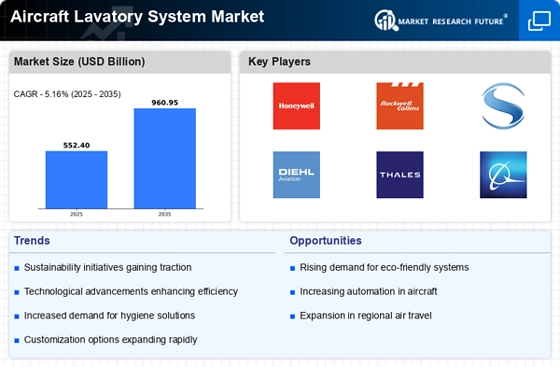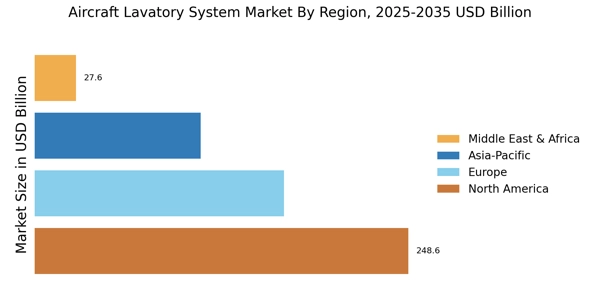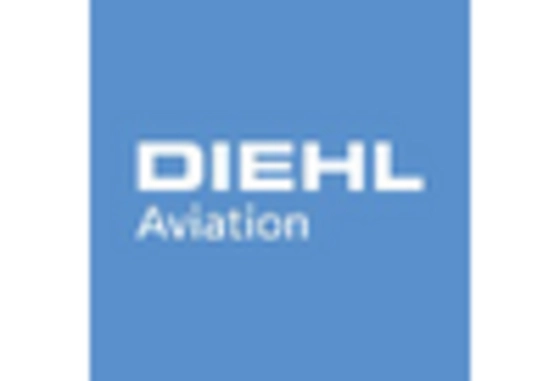Sustainability Initiatives
The Aircraft Lavatory System Market is increasingly influenced by sustainability initiatives. Airlines are under pressure to reduce their environmental footprint, leading to the adoption of eco-friendly lavatory systems. These systems utilize biodegradable materials and water-saving technologies, which align with global sustainability goals. The market is projected to grow as airlines invest in systems that minimize waste and enhance recycling capabilities. According to recent data, the demand for sustainable lavatory solutions is expected to rise by 15% annually, reflecting a shift towards greener practices. This trend not only meets regulatory requirements but also appeals to environmentally conscious consumers, thereby driving growth in the Aircraft Lavatory System Market.
Passenger Experience Enhancement
Enhancing passenger experience is a pivotal driver in the Aircraft Lavatory System Market. Airlines recognize that lavatory facilities significantly impact overall passenger satisfaction. As a result, there is a growing emphasis on designing lavatories that are spacious, clean, and equipped with modern amenities. Features such as touchless technology, improved lighting, and enhanced privacy are becoming standard expectations. Market analysis indicates that airlines investing in upgraded lavatory systems can see a positive correlation with customer loyalty and brand reputation. This focus on passenger experience is likely to drive innovation and investment in the Aircraft Lavatory System Market.
Integration of Smart Technologies
The integration of smart technologies is transforming the Aircraft Lavatory System Market. Advanced systems equipped with sensors and IoT capabilities are enhancing user experience and operational efficiency. These technologies allow for real-time monitoring of lavatory conditions, ensuring cleanliness and functionality. Furthermore, data analytics can optimize maintenance schedules, reducing downtime and operational costs. The market for smart lavatory systems is anticipated to expand significantly, with estimates suggesting a growth rate of 20% over the next five years. This technological advancement not only improves passenger satisfaction but also streamlines airline operations, making it a crucial driver in the Aircraft Lavatory System Market.
Regulatory Compliance and Innovation
Regulatory compliance is a critical driver in the Aircraft Lavatory System Market. Airlines must adhere to stringent regulations regarding hygiene and waste management, prompting innovation in lavatory systems. New regulations often require the implementation of advanced waste treatment technologies and improved sanitation measures. As a result, manufacturers are investing in research and development to create compliant systems that meet these evolving standards. The market is expected to see a surge in demand for innovative lavatory solutions that not only comply with regulations but also enhance passenger comfort. This focus on compliance and innovation is likely to propel growth in the Aircraft Lavatory System Market.
Cost Efficiency and Operational Optimization
Cost efficiency is a fundamental driver in the Aircraft Lavatory System Market. Airlines are continually seeking ways to reduce operational costs while maintaining high service standards. Efficient lavatory systems can contribute to significant savings through reduced water usage and lower maintenance costs. The adoption of modular designs allows for easier installation and upgrades, further enhancing cost-effectiveness. Market trends suggest that airlines prioritizing cost-efficient lavatory solutions can achieve a competitive edge. As operational optimization becomes increasingly important, the Aircraft Lavatory System Market is likely to witness a shift towards more economical and efficient lavatory systems.


















Leave a Comment